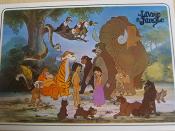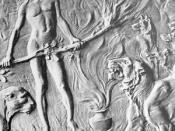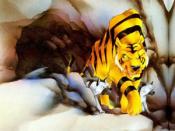When reading Rudyard Kipling's The Jungle Book, one could look at the Jungle as a "city" and the animals as its inhabitants, its civilization. A civilization is "the type of culture and society developed by a particular nation or region or in a particular era" (American Heritage 246). Each animal in The Jungle Book represents a different part of the "city." In a city, there are the lazy people, the hard workers, the thieves, the cheaters, the criminals, etc. It is all the same with the Jungle. Kipling uses the Jungle and the animals to represent human civilization, and sees civilizations and cultures as being threatened by "danger." A danger is an "exposure or vulnerability to harm or risk" (American Heritage 334). This danger can be represented by many different things: war with other nations or lack of food, for example. As a civilization gets older and older, part of that culture is lost, and even that could pose as a danger.
One of Kipling's main themes in his writing was the way that civilization is always being threatened by danger. That theme is clearly seen in The Jungle Book. And what is this danger that is present in this novel? This danger is symbolized by none other than the tiger Shere Khan. Through the use of Shere Khan and the Law of the Jungle, Kipling expresses how civilization is always being threatened, while at the same time using the Law of the Jungle and all of the animals to metaphorically show morality and civility in human civilization.
The easiest way to see how this "civilization" is being threatened is to break it down and look at what each animal represents. As Angus Wilson put it;
The chief glory of [Kipling's] art in the Mowgli stories lies in his...



"Civility and Morality..."
I was bummed to not see one of your own comments...to see if you were correct. Anyways, well-written, indepth, and a good research tool. Well done.
4 out of 4 people found this comment useful.